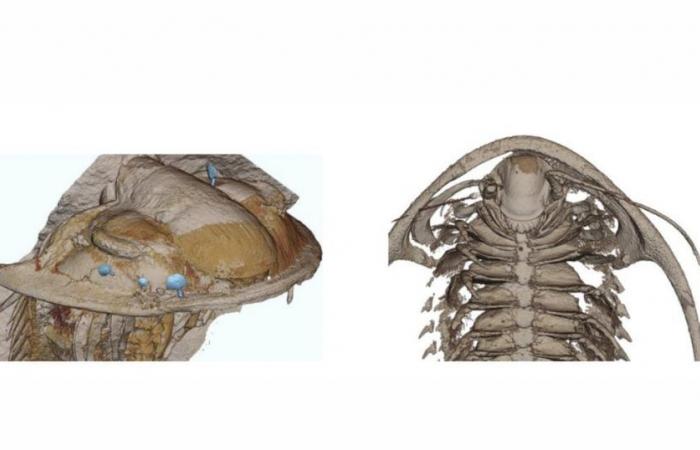
The study carried out by this international team composed of teacher-researcher Abdelfattah Azizi, doctoral student Asmaa El Bakouch from the Faculty of Science and Technology of Cadi Ayyad University (UCA), teacher-researcher El Hafid Bouougri from the Semlalia Faculty of Sciences of the same university, teacher-researcher Abderrazak El Albani and doctoral student Ibtissam Chriki from the University of Poitiers in France, as well as several foreign researchers, enabled the discovery in Morocco of two new species of trilobites in an exceptional state of conservation, indicates a press release from the UCA.
These organisms were discovered in the Moroccan High Atlas Mountains, more precisely in the region of Aït Ayoub, in the province of Taroudant, specifies the press release, which recalls that the results of “Three-dimensional study of trilobite fossils buried in volcanic ash during the Cambrian» were published in the famous magazine Science.
Read also: Picture of the day: Fossil of the largest feathered dinosaur discovered
The geochemical study of the rocks characterizing the site has allowed us to understand the conditions of fossilization of living organisms that lived in a marine environment and has revealed that they were suddenly submerged by ash resulting from the volcanic activity of the area at that time. The conditions of formation of these fossils somewhat resemble the model of the volcano of the city of Pompeii.
These conditions made it possible to slow down the decomposition of soft parts and preserve the smallest morphological details of the trilobites’ legs and digestive system. These details were determined through the study of the three-dimensional structure of the samples taken using an X-ray microtomography device, an operation supervised by teacher-researcher Abderrazak El Albani at the University of Poitiers in France.
This study is a continuation of research work begun in 2017 on the same site, carried out by a team of researchers from UCA and the University of Leicester in the United Kingdom, led by Professor Abdelfattah Azizi of the Faculty of Science and Technology. The description of the discovery site and its preliminary results were published in 2017 in the journal Scientific Reports.
Par Le360 (with MAP)
06/30/2024 at 8:38 a.m.





